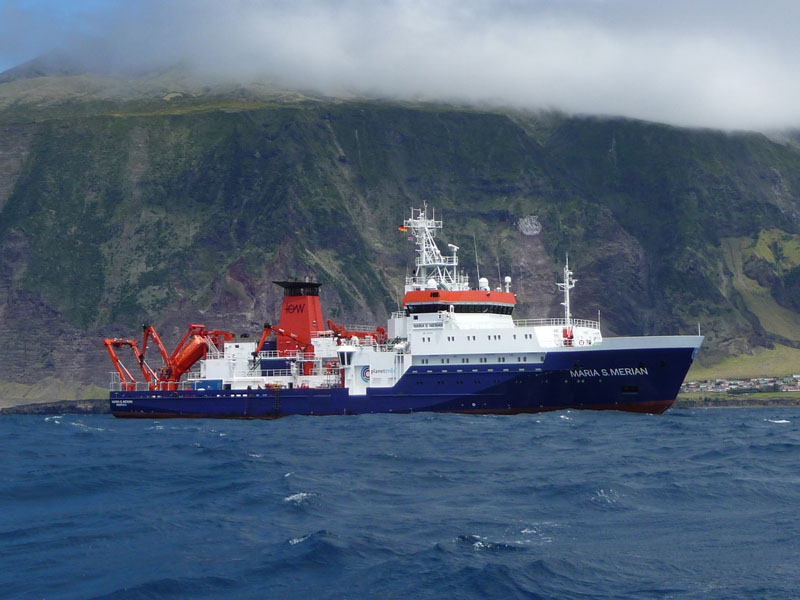MARIA S. MERIAN MSM122
- Area:
- North Atlantic Ocean
- Time:
-
19.10.2023 - 09.11.2023
- Institution:
- Chief scientist:
- Ingo Grevemeyer
Fracture zones were recognized to be an integral part of the seabed long before plate
tectonics was established. Later, plate tectonics linked fracture zones to oceanic transform faults, suggesting that they are the inactive and hence fossil trace of transforms. Yet, scientists spend little time surveying them in much detail. Recent evidence suggests that the traditional concept of transform faults as being conservative (non-accretionary) plate boundary faults might be wrong. Instead, numerical modelling results suggest that transform faults seem to suffer from extensional tectonics below their strike-slip surface fault zone and a global compilation of legacy morphological data suggest that ridge-transform intersections seem to be settings of magmatic activity, modifying the lithosphere and burying the transform valley before it passes into the fracture zone region. Here we like to test these hypotheses by collecting a suite of new data from the Oceanographer transform fault
offsetting the Mid-Atlantic Ridge south of the Azores near 35°N. The main aim of the programme is the installation of a long-term seismological and seabed geodetic network to record local micro-earthquakes over one year, revealing tectonic active compartments of the fault zone, assess the stain field and evaluate the slip rate of the strike slip fault.
Furthermore, measurements of the magnetic field and bathymetric seafloor mapping will be used to evaluate the accretionary process of crustal formation in the transform fault.



